1930 Austin Seven
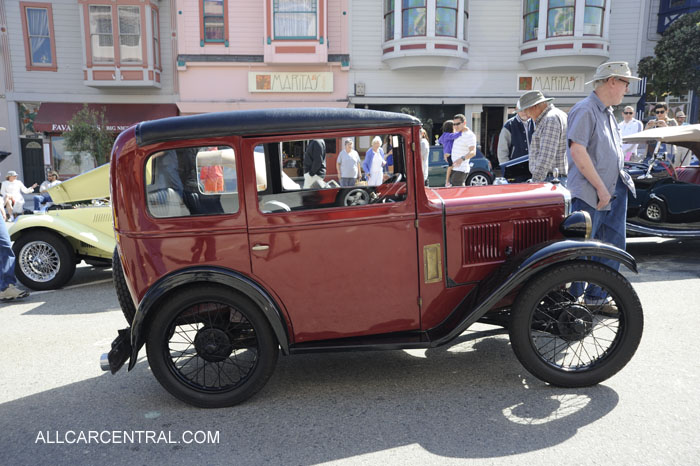
In 1931 three Japanese bankers decided that they would obtain a production license from the British Austin Motor Company and start to manufacture a family size motor car. The license was for the famous Austin Seven which by that time was also being manufactured in Germany, Australia, India and Canada under license. For some reason that is not clear, they chose the name Datson (Later to be changed to Nissan).
(Ed's Note: The name Datson/Datsun was used in production by DAT Motors and its successor, Nissan Motor Co., Ltd. The name was created in 1931 for a new car model, and spelled as "Datson" to indicate a smaller size DAT car. In 1933 Nissan Motor Co. changed the last syllable of Datson to "sun" or Datsun. The Datsun brand was discontinued in March 1986.)
There were plans to start producing a Ford vehicle, again under license, but this never happened. The 750cc Austin was the principle car that came out of the Yokohama factory although a couple of Japanese designs were produced that were not a success. At the end of WWII the production moved to Tokyo where a larger production plant was built and opened in 1947. Once again production was under license from Austin and the cars were simply prewar designs that Austin was selling on their home market while developing a post war range of modern vehicles for sale in the USA. 1959 saw the first home grown Datsun in the shape of the Datsun 2000 it was an instant success.
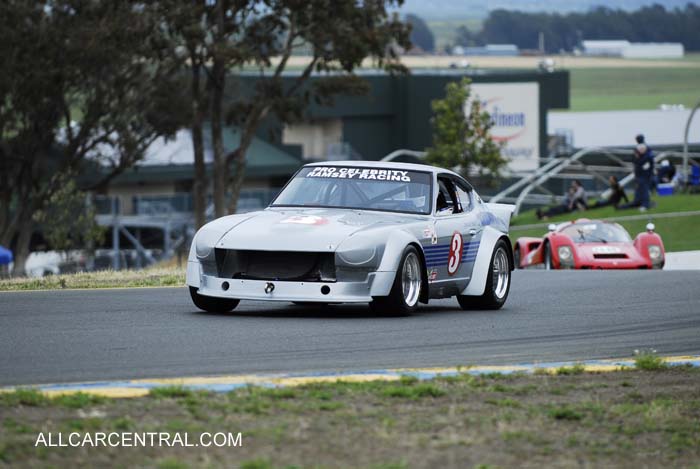
In 1966 Datsun merged with Prince Motors the result was some modern attractive designs. The most famous being the then unique styled 240 Z sports with a six cylinder engine, a car that found a ready market both at home and as far as exports were concerned. The 280 ZX ensured that to company had an established sports car market in North America. An over powered 4 liter V8 was introduced in 1980 that had a short life span for several reasons not least the oil crisis that hit most large cars and the fact that the 280ZX was such a success that its big brother simply died on the showroom floor. The 280 was followed by the Nissan 300, another success and is still considered a fine example of a sports vehicle today.
The turn of the last century saw the birth of several car manufacturers who are still with us, like Renault who built its first car in 1898. Louis Renault and his younger brother built a one and a half horse power vehicle in his parent's back yard and drove it in several motoring events with some success. (By that I mean it did not need to be pushed home!) The brothers received several orders for a similar vehicle and the Renault Car Company was formed in the winter of 1900. Engine size was increased to a 1000 cc and several cars were designed and sold as Taxi Cabs for Paris use. When the Germans advanced within twenty miles of Paris in the early years of the First World War it was the Paris taxi cabs that saved the day by being used to transport French troops to the front line and stopping the advance of the Bosh.
Renault Dauphine
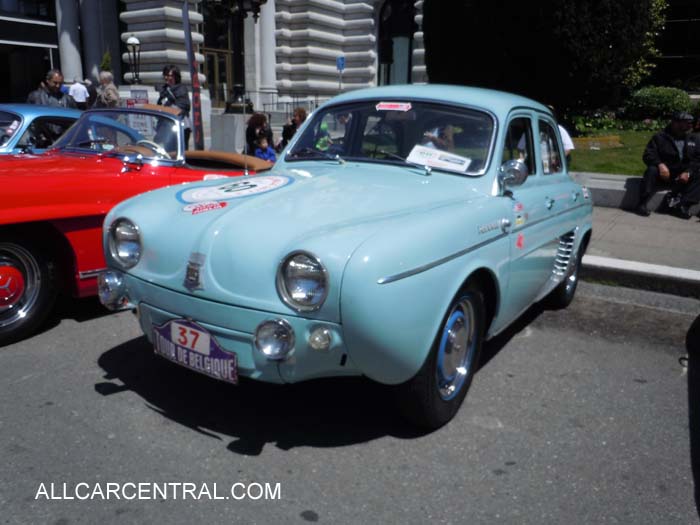
Despite the success of the Renault range of vehicles the company is always associated with the famous 4 CV and the popular Dauphine...Popular in France that is but certainly not in the USA where it was presented as the Second Car for the successful family. Like so many European cars of that period rust and more rust became the major problem especially where salt was used on the roads in winter. A plastic version of the American Jeep was produced without much success but the ever popular 4CV certainly puts the company or rather the car, on the list of truly classic vehicles.
1959 Fiat 500 Bianchia
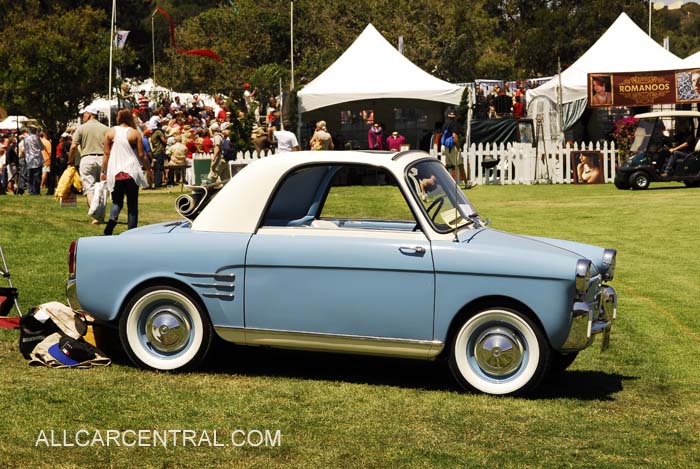
As early as 1922 the Fiat Company in Italy decided that they would move into the mini car market. Prior to this the company was known for solid reliable workhorse vehicles a touch short on style but dependable and more important financially successful. The Fiat 509 with a 990 cc engine was presented at the Milan Car show in 1926 and over the next four years Fiat sold over 90,000 such cars. In 1938 a 500 cc Fiat was introduced to be followed in the post war years..(1955) by a revised 600cc mini car that sold over a million during its production period. There can be little doubt that the birth of the British Mini was certainly influenced by the success of the small so-called baby cars produced in Europe.
Such companies as NSU, Germany; Hillman, UK; Citron, France; were producing small economical family vehicles to a growing market. It can be argued that the Austin Seven was the first popular mini car that was launched in 1923 however the Fiat 509 comes close with its presentation in the same year to a limited audience while the Austin was being sold to the general public.
2014 Alfa Romeo 4
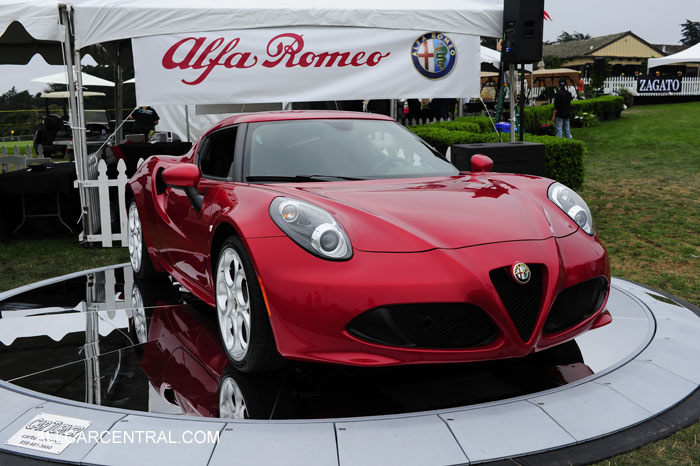
Moving from the small to the famous, in 1969 Fiat took over Lancia and later that same year Ferrari, followed by Alfa Romeo. Today Fiat is one of the largest manufacturing companies in the world building cars in twenty-three countries. It recently purchased control in a major US car manufacturer, which might mean we would see the Alfa Romeo back in American showrooms. (it is already on its way at date of publishing - Ed.)
I don't think that anyone would argue that the name Volvo creates an image of a solid quality car designed for the equally solid well-heeled family market. It has sold its image on safety, something that you would be happy to take your children to school no matter what the weather might be. A touch lacking in style and certainly not a top performance vehicle despite the fact that certain models are up there in the sports performance club.
The company started in 1927 based on the idea that they would design a car suitable for Swedish roads both in summer and winter. Furthermore the components for the Volvo would be produced from components made in Sweden by Swedish manufacturers. There were several reasons for this. First a better control on quality. Second no extra costs for importing from another country. Third it created a national image for the car that appealed to the average purchaser. Quality was the main selling feature to a national market.
The world famous SKF ball bearing company financed most of the development costs. In the first two years just over a 1000 cars were produced and sold, the vast majority to the home market. During WW ll Sweden was neutral producing vehicles for the international market. Most of these sales went to Germany, which caused some embarrassment when the war ended! The post war years were difficult for Volvo. A world shortage of steel reduced production and the countries that were able to produce steel such as the USA and Britain were not keen to export.
1958 Volvo Amazon
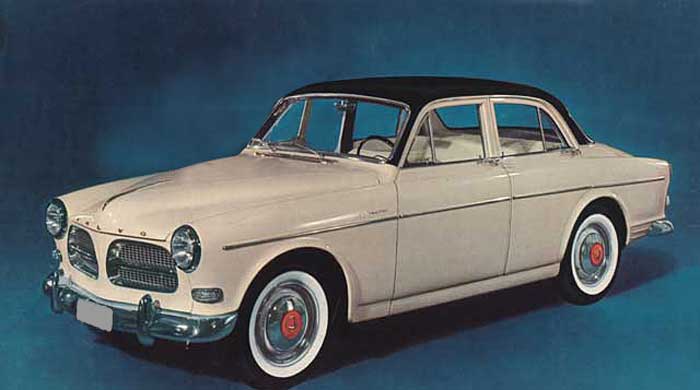
In 1947 Volvo did produce a family style car but as already indicated strictly for the home market. The international breakthrough came in the early 1960's The car was named the Amazon and sold a total of over 600,000 before it was superseded with the famous 264 GLE. Another interesting vehicle was the 1960 P 1600 Sports Coupe. Today a truly collectors car in every sense of the term.
Like a few other manufacturers Volvo played around with fiberglass bodies but with little success and the idea of a fiberglass sports never truly took off. The problem in most cases was the poor quality of the fiberglass molds and the fact that the body may not rust but the quality of the product left much to be desired. One accident and nine times out of ten you needed a complete replacement unit. John Horricks the CEO of the Anglo American steel corporation predicted in 1964 that cars built in a hundred years time would still need to be constructed with steel...(Up to now he seems to be correct)
1974 Trabant sedan
Submitted by
Rick Feibusch
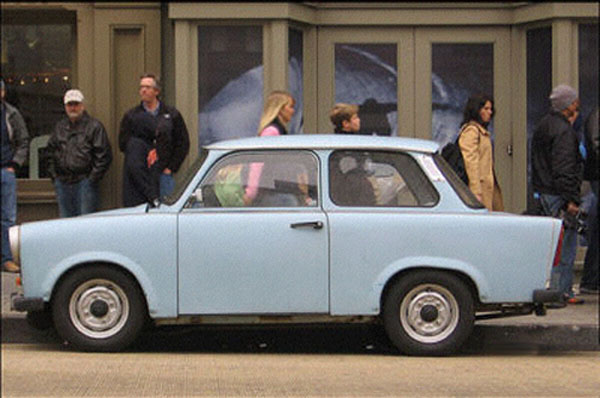
My final truly classic vehicle can still be driven in the capital of Germany, (Berlin) in fact you can pay fifty/seventy five Euros to simply hire the car for a few hours to drive about the city. When introduced in 1958 by the then East German Government, who proudly announced that the car had been made by the nationalized East German Car Industry. Because of the shortage of steel the body was made out of reinforced paper Mache, the power unit was a two-cylinder two-stroke 594 cc, driving the front wheels. Performance was quoted at around fifty MPH give or take a little. The name of the car was The Trabant and the waiting list for ownership was about six months. It is also interesting to note that the car was never exported outside East Germany despite the shortage of private vehicles within the Eastern Block!
As I have indicated they are now a collector's item and can be rented out to people who may have memories of the car. Note I simply said memories, not fond memories!

BACK TO TOP